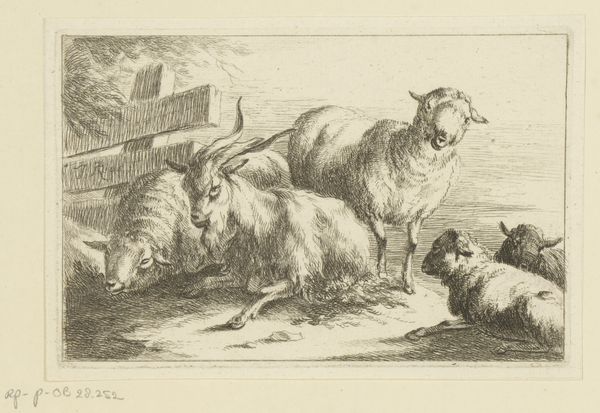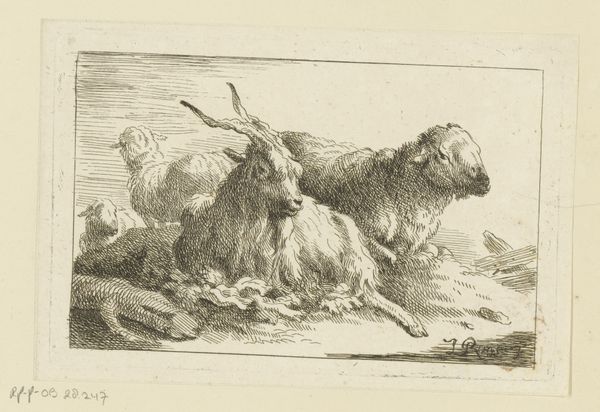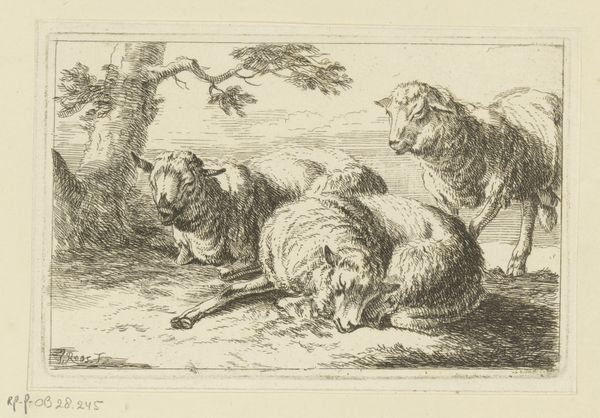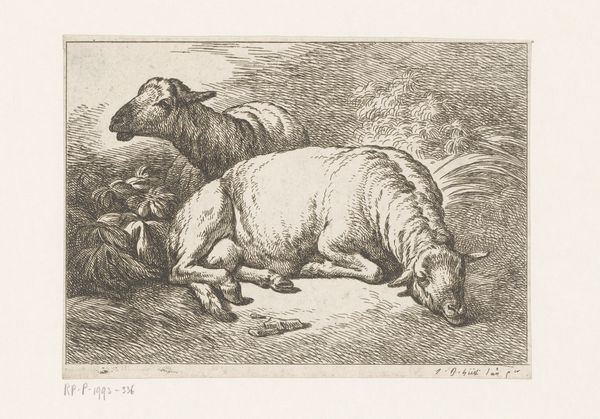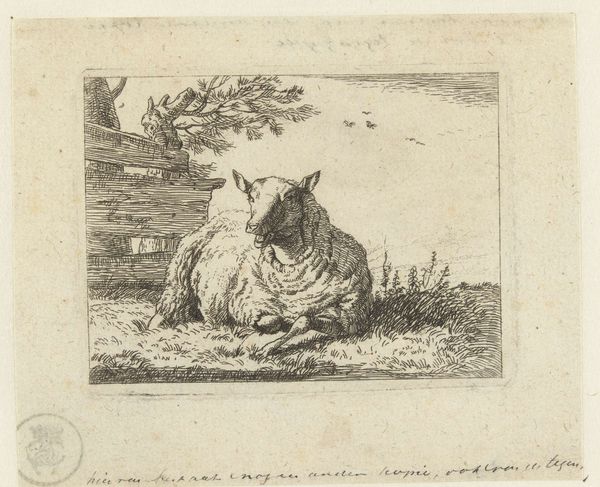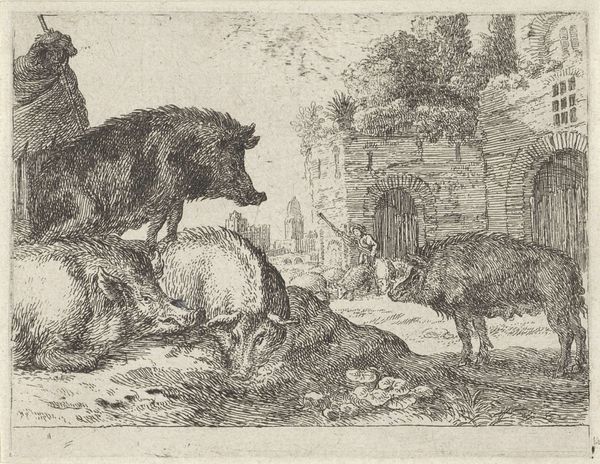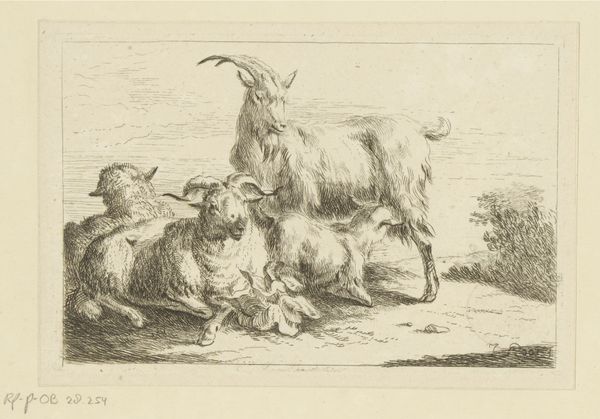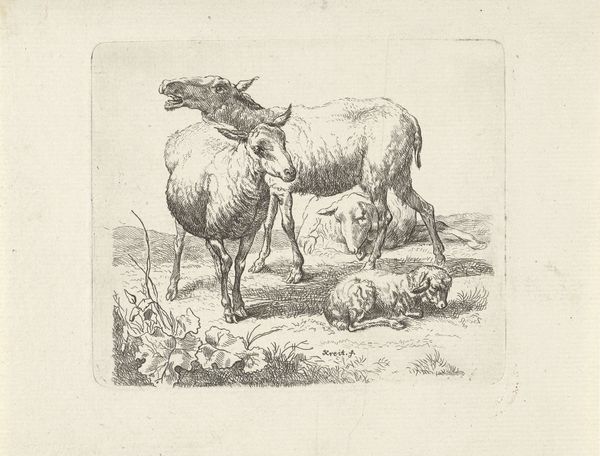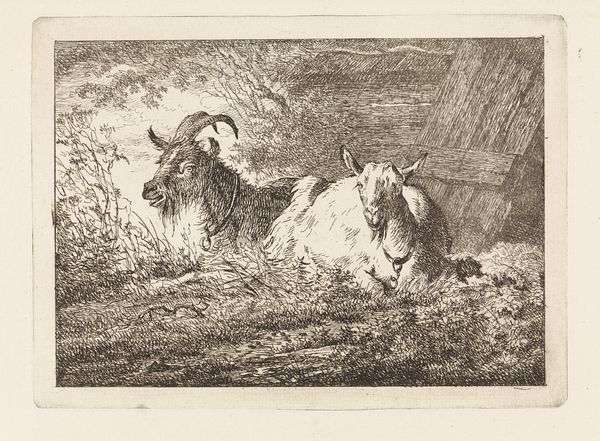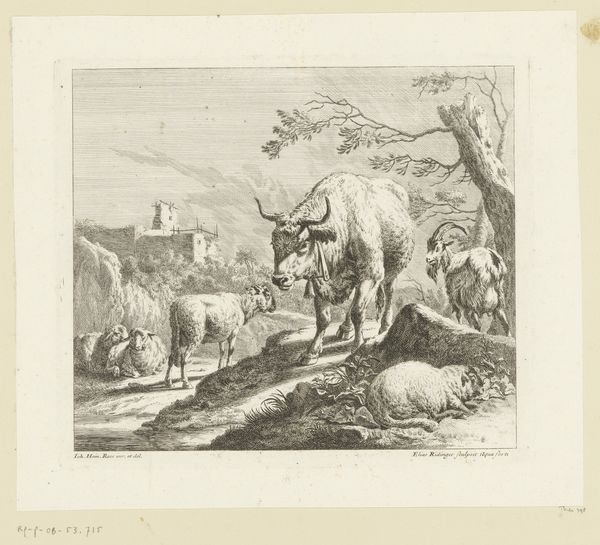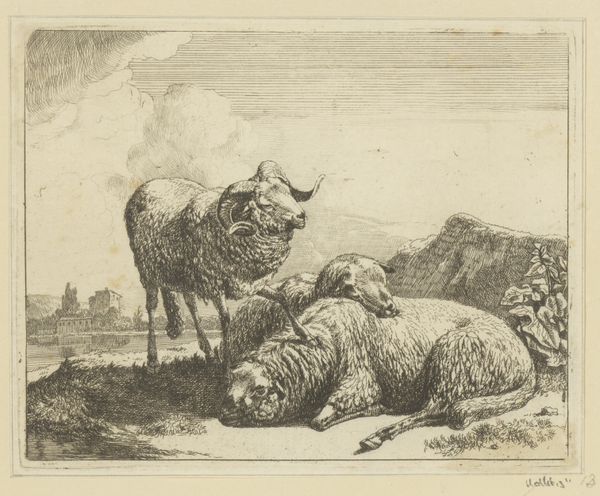
print, etching
#
baroque
# print
#
etching
#
landscape
#
figuration
#
line
#
genre-painting
#
realism
Dimensions: height 116 mm, width 175 mm
Copyright: Rijks Museum: Open Domain
Editor: This is "Ram en twee schapen" by Joseph Roos, created in 1754. It’s an etching, a print, currently held at the Rijksmuseum. I am immediately struck by how tactile the sheep appear. You can almost feel the texture of their wool through the etching. What stands out to you about its formal qualities? Curator: Formally, I’m intrigued by the artist's use of line. Note how Roos employs a complex network of hatching and cross-hatching to create a sense of volume and depth, particularly in rendering the fleece. Do you observe how the varying densities of the lines modulate the light, giving shape to the animals? Editor: Yes, I see that now! The light seems to sculpt their forms. It also flattens in areas. But I am wondering, does this emphasis on line also perhaps flatten the composition somewhat? Curator: Precisely. While there is an attempt at spatial recession with the suggestion of the landscape in the background, the dominant linearity maintains a certain degree of surface emphasis. The eye is constantly drawn back to the intricate network of lines, preventing a full illusionistic depth. The architectural structure is just suggested through hatching and line as well. It seems to serve to hold the artist's signature, "J. Roos." How does the placement and treatment of the signature influence your perception? Editor: It almost feels integrated into the scene, like part of the decaying structure itself. I like how the signature blends with the background, suggesting a subtle statement of ownership but, formally, balances with the subject. I appreciate the formal language informing my new interpretation. Curator: Indeed, close attention to such formal elements unlocks layers of understanding. Editor: This has given me a whole new perspective on how line can both create depth and maintain surface interest simultaneously. Thank you.
Comments
No comments
Be the first to comment and join the conversation on the ultimate creative platform.
